Transphobia is on the rise – and the press is to blame
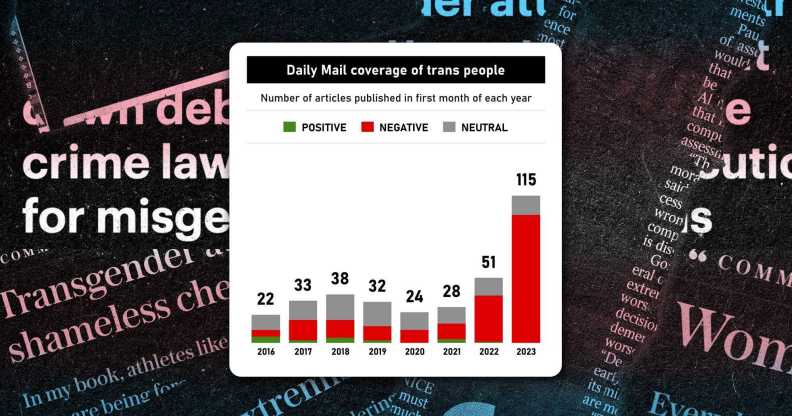
An increase in public anti-trans sentiment has been fuelled by hostile coverage of trans issues by right-wing newspapers. (Getty/Supplied)
An increase in transphobic sentiment among the British public has been fuelled by hostile coverage of trans people from the right-wing press, argues data journalist Ell Folan.
In January 2016, a leading British newspaper ran a series of articles about the trans community. Virtually all of them were overwhelmingly positive and inclusive. Surprisingly, the newspaper in question was the Daily Telegraph – now famous for its deeply critical stance towards trans people.
The Telegraph’s dramatic shift in attitude towards the trans community reflects a general trend amongst Britain’s press. Coverage of trans people has increased sizeably since 2015, and the overwhelming majority of articles have been negative. At the same time, public attitudes towards trans people have hardened significantly, and both major political parties have abandoned their previous commitments to expanding trans rights.
Several years ago, the British press barely covered the trans community – and when it did, many of the articles they published were positive. This has now changed.
Coverage of trans people has risen dramatically, with an average of 154 articles about the trans community now published every single month since 2015. That’s over 13,000 articles focused on less than one per cent of Britain’s population. This might be a welcome change if the coverage was positive and inclusive – however, analysis of the actual articles shows that it is not.
Two examples illustrate this trend: the Daily Telegraph (a leading broadsheet) and the Daily Mail (the UK’s most popular tabloid).
Both papers have massively increased their coverage of trans people since 2015, and in both cases they have become more negative over time.
In the first month of 2016, the Telegraph published just 10 articles related to trans people; six of them were actively positive. This included a piece by a senior Tory MP calling for better trans healthcare, a glowing profile of a transgender model, and multiple articles from trans people discussing a variety of topics from a trans perspective. Yet by January 2023, the broadsheet newspaper’s stance had shifted decisively.
The paper ran a stunning 75 articles about trans people in January this year alone, and 73 of those were negative. This represented a 650 per cent increase in coverage – and none of it was positive. These included articles such as “Women are being erased by trans extremism”, “We will look back in horror at Nicola Sturgeon’s transgender reforms” and “The government should not be browbeaten into a ban on trans conversion therapy”.
All of this is a stark contrast to their older pieces; as recently as 2018 the paper was praising the documentary Transformation Street as “an insightful and positive look at transgender issues”.
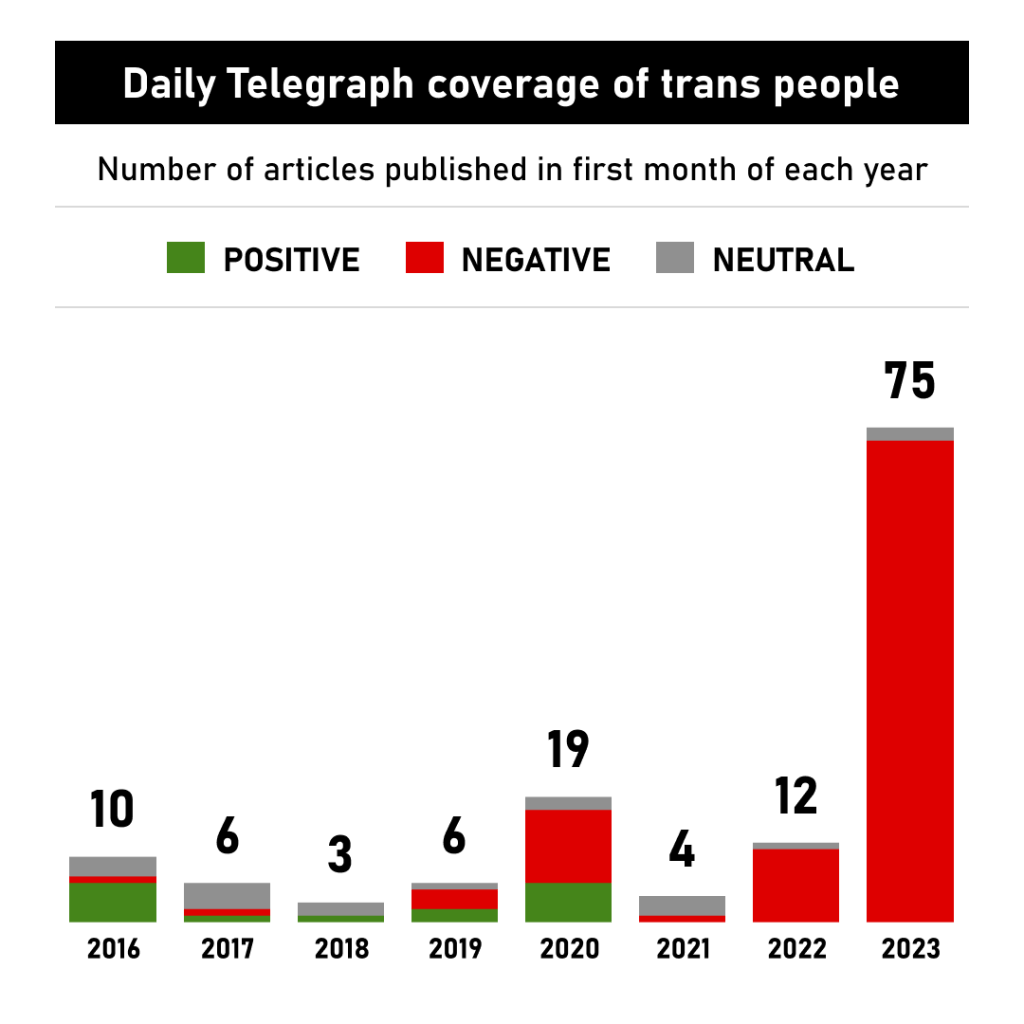
Yet even these dramatic changes are eclipsed by the Daily Mail’s trans coverage. At the start of 2016, the Mail published a mere 22 pieces related to trans issues – this included five positive articles, such as “Adults to get the legal right to choose gender”.
Yet by January 2023, their coverage of trans people had ballooned to an astonishing 115 articles in just one month. Of these, 100 were negative, including “Woke NHS must put new mothers first” and “Woke fury as Iowa diocese bans preferred pronouns”.
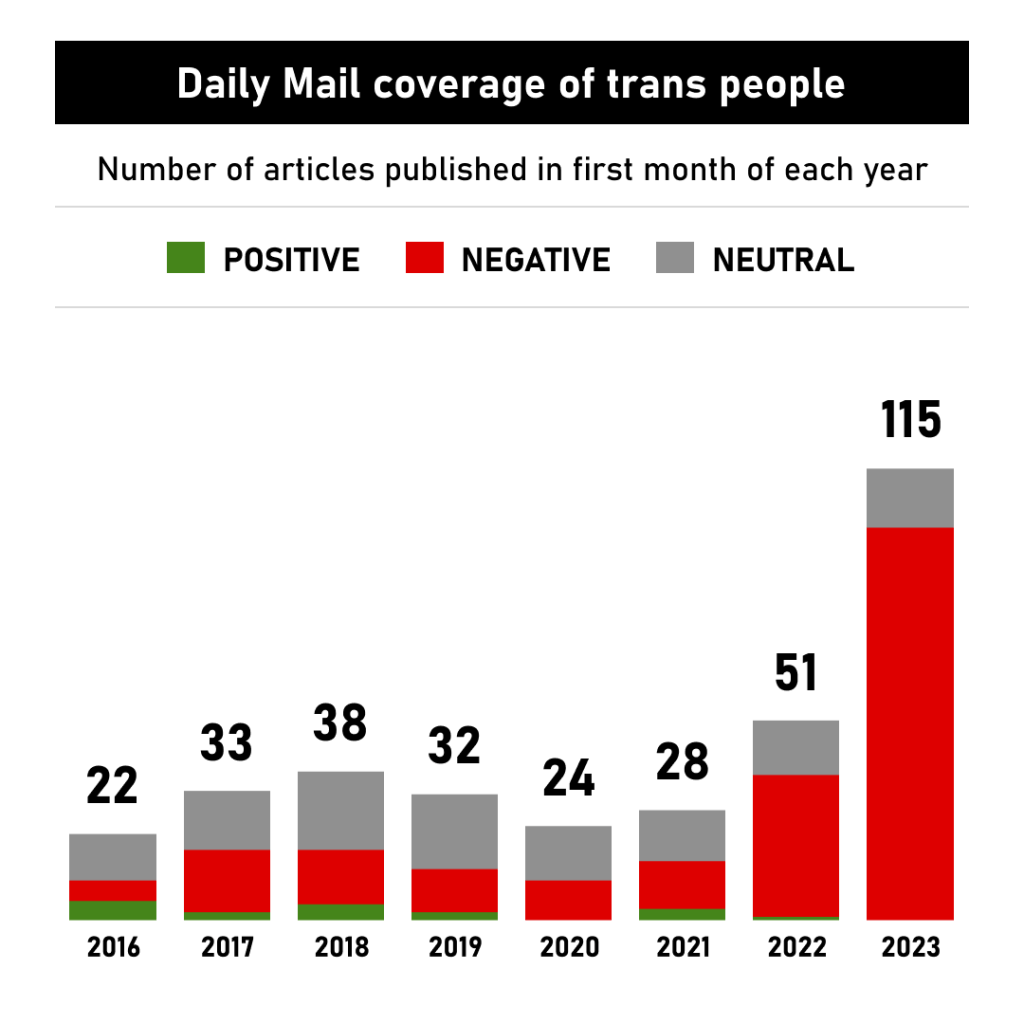
But did this have an impact on public opinion? With newspaper circulation declining, some commentators are sceptical of the power that the media can have on the views of the electorate in 2023.
Unfortunately, newspapers still have a great deal of influence on the public and political agenda in Britain, and nowhere is this more obvious than in how perceptions of trans rights have changed.
As recently as February 2021, an absolute majority of British voters (51 per cent) agreed with the statement “a transgender woman is a woman”, including 6 in 10 women. Just 34 per cent disagreed. But after years of negative coverage from the press, those numbers have changed.
In April this year, only 33 per cent of voters agreed that trans women are women, with 47 per cent disagreeing.
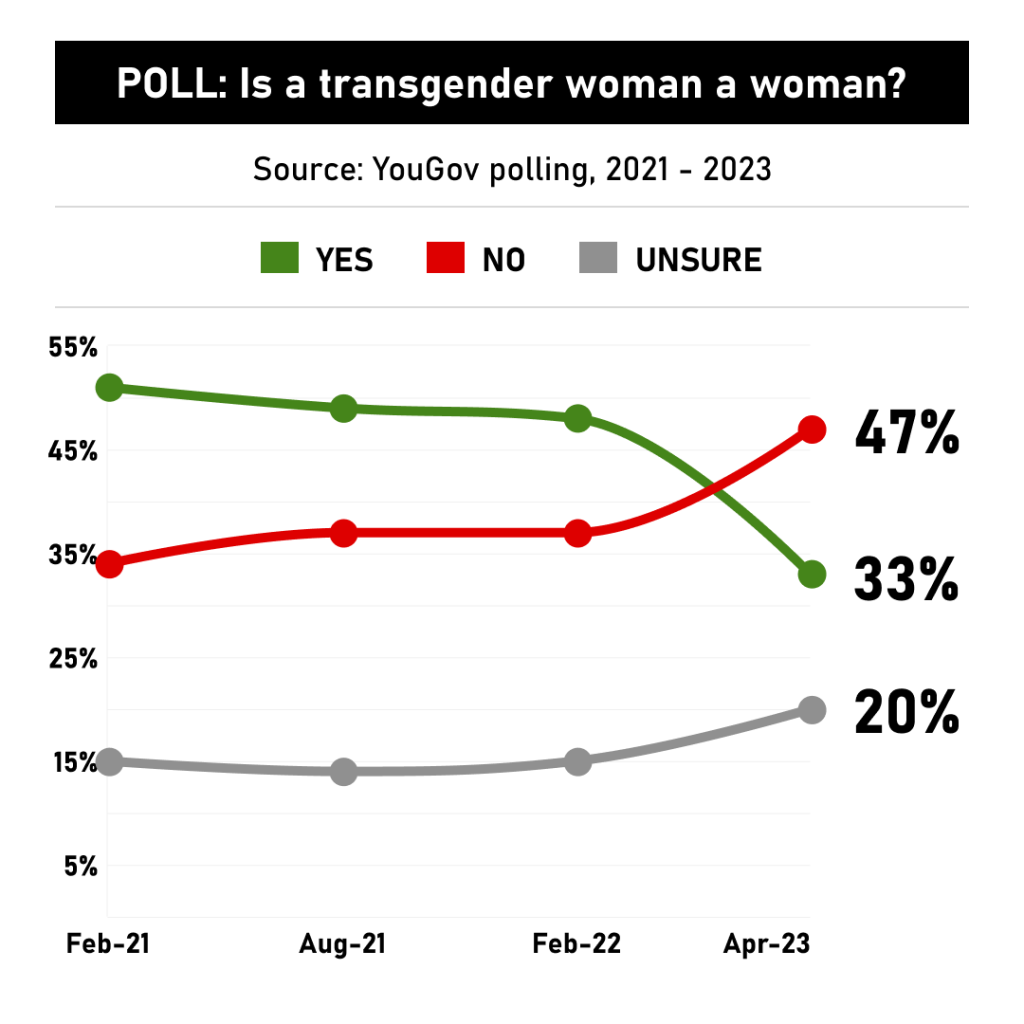
What’s more, public opinion on trans women accessing women’s spaces has shifted decisively over the past few years – and this change corresponds with the increasing media coverage. In December 2018, just 29 per cent of Brits felt that allowing trans women to access women’s spaces presented a risk of harm to women; by May 2022, this had risen to 39 per cent.
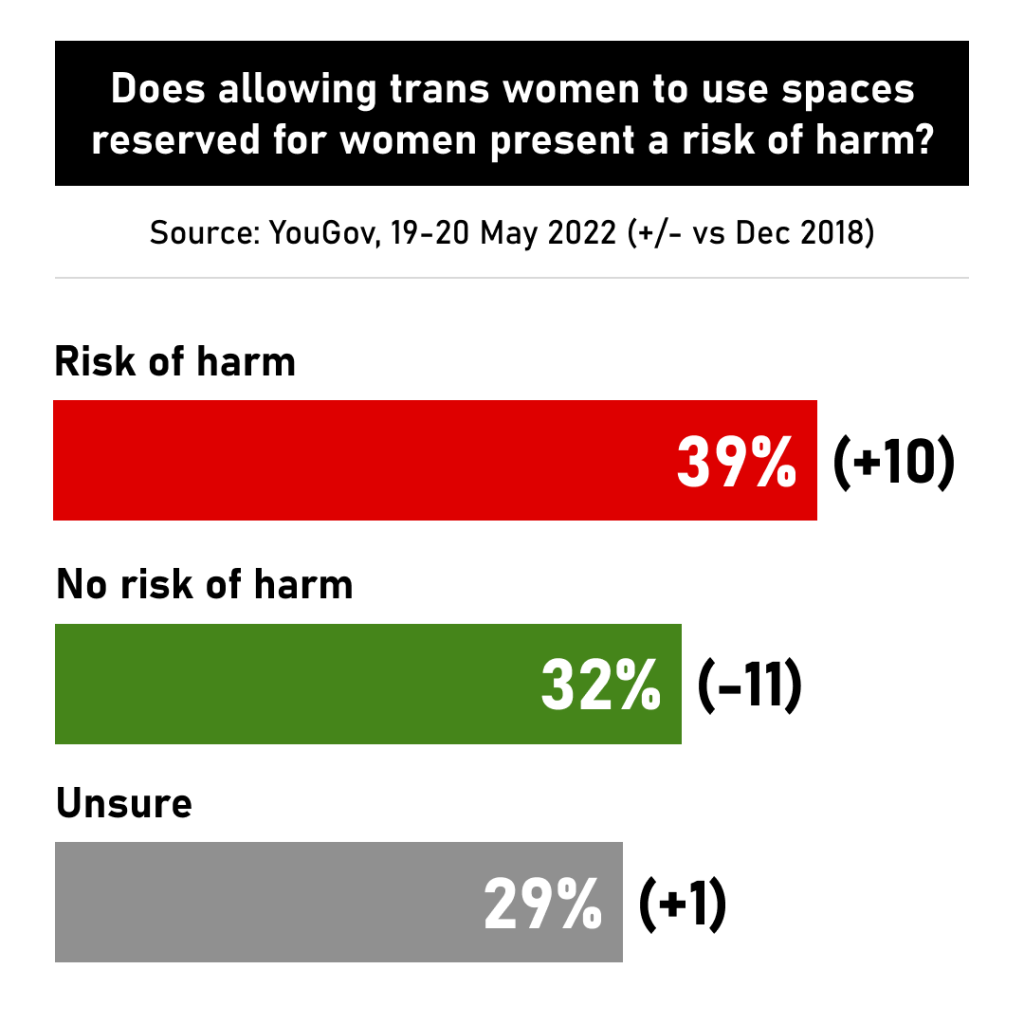
Overall, net support for trans women has fallen from +17 in 2021 to -14 in 2023 (-182 per cent), while the number of negative Daily Mail articles has risen from 12 to 100 (+733 per cent).
If we plot both these data points on an index, we can see how public opinion has shifted in response to media coverage – and it’s not good.
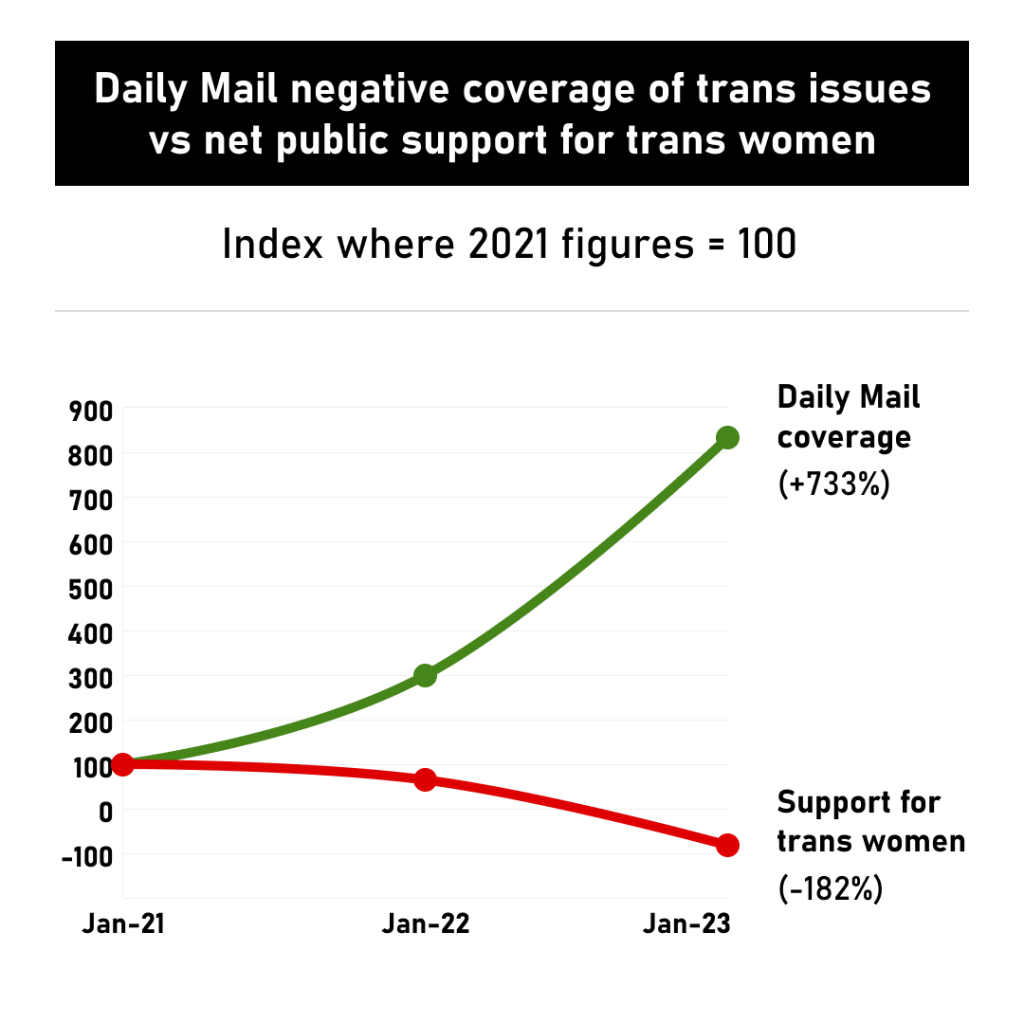
In short, over the past few years that has been a dramatic shift in press coverage towards trans people. Negative coverage of trans people in mainstream newspapers has skyrocketed, with both tabloids and broadsheets often uniformly opposing trans rights.
The consequences are clear: public opinion has become more sceptical of trans rights and both Labour and the Conservative Party have abandoned previous commitments to supporting trans people.
It is clear that the media plays an important role in shaping public perceptions, and unless their negative coverage is corrected and refuted, public opinion will continue to worsen.
Ell Folan is a data journalist and the founder of Stats for Lefties

